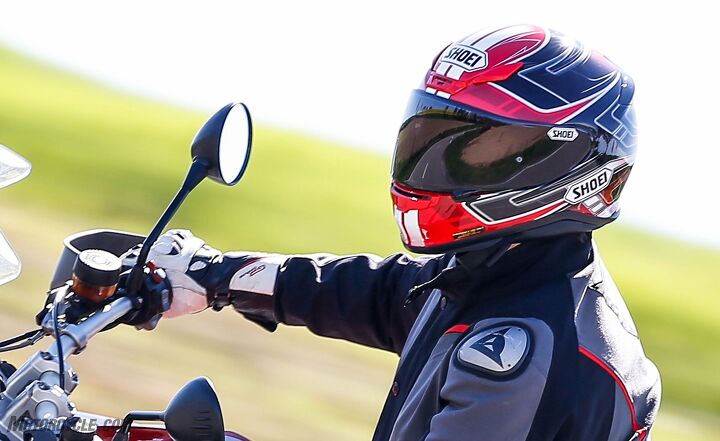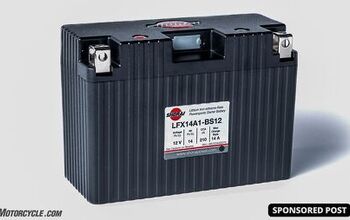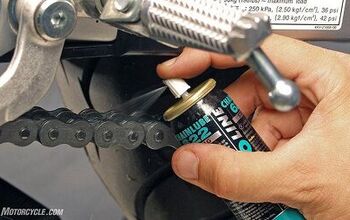MO Tested: Shoei CWR-1 Transitions Shield Review

A solution for RF-1200 owners who don't like to carry extra shields
Riders who prefer wearing tinted shields on their helmets instead of sunglasses tucked inside them are painfully aware of the conundrum: How do we handle the switch to a clear shield after dark?
If you’re like me, you keep a tank bag on your bike that carries the extra shield. However, I don’t always ride my personal bike, and I frequently ride bikes on which tank bags look rather silly. Consequently, I have carried spare shields in backpacks or in a case tucked around my waist inside my jacket. While functional, neither option is ideal. Similarly, helmets with internal flip-up shields offer a different a different means of dealing with the issue but can also suffer from other problems, like having the internal tinted shield fog in cold weather or allowing reflective glare to bounce up from below.
Photochromatic shields have been the motorcycle visor Holy Grail for a long time, but until recent years, their performance and degree of actual tinting left much to be desired. Ever since Shoei first announced in early 2015 that it was partnering with Transitions Optical Inc. to produce a shield for their best selling full-face helmet, the RF-1200, I’ve been waiting for the opportunity to test one. (In 2012 the Bell Helmets Transitions SOLFX Quick-Release Shield, a shield created in a similar partnership with Transitions Optical, won the MO Best New Product Honorable Mention.) Long story short, now that I have one of these shields affixed to my favorite lid, it will be difficult to go back to the task of switching shields to match the lighting conditions.
In the time it takes to walk from inside a building, put on my helmet, and mount the motorcycle, the Shoei Transitions shield can change from completely clear to full tint for the level of ambient light. (Shoei claims full activation of the tinting in two minutes.) Bright, sunny days the shield goes full dark to a level equal to the Dark Smoke shield I previously used during daylight hours. The tint is a slightly, warmer color than the more neutral color of the Dark Smoke, and I actually prefer the tint of the Transitions shield. However, if cloud cover moves in, the Transitions shield will lighten its tinting for optimal vision.
Additionally, the shield really is clear after dark – unlike earlier versions of photochromatic visors I’ve tried. The shift from dark back to clear is slower than the initial darkening, but in the shift from day to evening to night, the shield keeps pace with the dropping intensity of the ambient light. However, similar to dark shields and sunglasses, your vision will be inhibited inside tunnels during daylight because there simply isn’t enough time for the photochromatic shield to adapt.
Since the Shoei Transitions shield relies on a chemical reaction to activate the tinting, it’s natural to wonder how this process will respond to time and repeated cycles. When I asked Moichi Tsuzuki, Shoei Safety Helmet Corp, president, about this issue, he said that, yes, the tinting would lessen over time, but the prototype shields had been tested by motorcycle couriers in Japan during their development process. The results point to the average user getting several years of use out of the shield before the reduction in the tinting was noticeable. Obviously, the two months I’ve been using the Transitions shield can’t predict the actual life cycle.
At a MSRP of $170, pricing for the Shoei CWR-1 Transitions Shield is pretty high, though you may find slightly cheaper prices online. When you consider that, if you want to account for the full range of tinting provided by the Transitions shield, it takes the place of three other CWR-1 shields – at $60 apiece – you do save money, but let’s be realistic, most riders only use clear and dark, bringing the cost down to $120. Still, what you’re paying for is convenience and the increased cost of new technology. As these shields become more common and spread across the product lines of Shoei and other helmet manufacturers, the prices will surely drop. (Right now, the Transitions shield is only available for the RF-1200 and the X-Fourteen.)
If you’ve been following the penetration of Transitions shields into the motorcycle market, you know that Bell and Lazer helmets also offer licensed Transitions shields of their own for about $30 less. However, their standard tinted shields retail for about $20 cheaper, making the price difference for the photochromatic ones proportionally less expensive. Regardless, Shoei has always positioned itself as a premium manufacturer, so the pricing seems in line with its image. Additionally, the shield comes ready for use with the Pinlock anti-fog insert that was included with the RF-1200.
If you live in your helmet, like I do, and have a helmet that the shield is manufactured for, you should consider purchasing a Shoei CWR-1 Transitions Shield. You won’t regret it.

Like most of the best happenings in his life, Evans stumbled into his motojournalism career. While on his way to a planned life in academia, he applied for a job at a motorcycle magazine, thinking he’d get the opportunity to write some freelance articles. Instead, he was offered a full-time job in which he discovered he could actually get paid to ride other people’s motorcycles – and he’s never looked back. Over the 25 years he’s been in the motorcycle industry, Evans has written two books, 101 Sportbike Performance Projects and How to Modify Your Metric Cruiser, and has ridden just about every production motorcycle manufactured. Evans has a deep love of motorcycles and believes they are a force for good in the world.
More by Evans Brasfield

































Comments
Join the conversation
This is a very timely review. I just bought a new RF-1200 (2 actually; they were on sale at my local dealer). They tried to contact the Shoei sales rep to find out about this visor because I wondered if it worked well (I have Transitions lenses in my glasses but they don't work with visors that have UV filters). The only thing they could find out is that the visor is currently on backorder. I bought a blue spectra tint instead because I need something that will cut the glare. I think I'll have my dealer go ahead and get one of these on order.
I was skeptical about dropping almost $200 on a face shield, but I received a $100 gift certificate for referring a friend to a dealer, so I used that towards the purchase. I have to say, I'm very impressed. I have it on my new RF-1200 and it works incredibly well with a very fast transition from clear to dark.